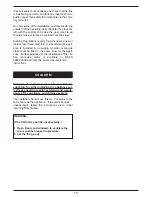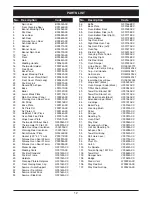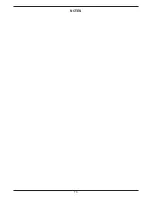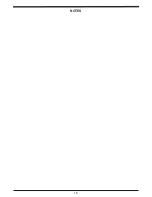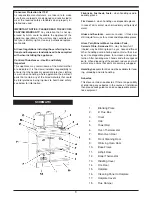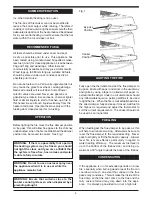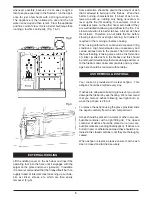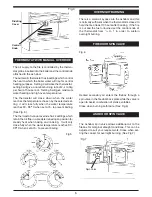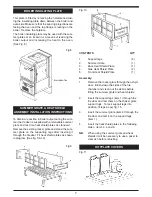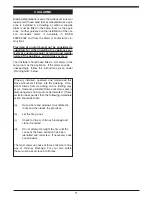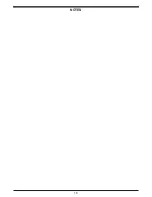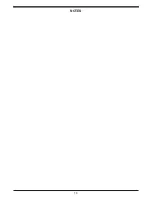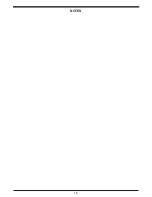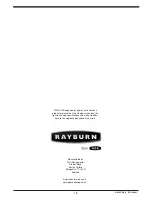
8
The insulating covers retain most of the heat that
would otherwise be radiated into the kitchen. They
also retain the heat in the hotplates so that rapid heat-
ing of cooking utensils will result when one or both of
them are lifted for cooking purposes. (See Fig. 11)
For best cooking results use heavy based, flat
bottomed utensils.
When baking or roasting, set the flue damper to
cooker and open the thermostat fully until the ther-
mometer shows a temperature about 50
o
F higher
than that which is required. Then close the thermo-
stat to a point where the required temperature is sus-
tained (a little practice will soon show how much
thermostat adjustment is necessary). Much will de-
pend on the strength of the chimney draught. It will
be found that a thermostat setting of 3 will be suitable
in most cases.
The main oven is heated on all four faces. The sim-
mering oven is heated on the top face only.
The temperature will be about half that of the main
oven, for slow cooking, of casseroles, stews, soups
etc.
USE OF OVENS
COOKING UTENSILS
INTERNAL/FLUE CLEANING
The flue or chimney will need to be cleaned regularly.
How often will depend a lot on how your Cooker is
run, but, to start with, make a point of inspecting the
flue system every one or two weeks
Fig.12
This period may well be extended as time goes by if
there is little sign of deposits. Some people find they
need to sweep the flue every six to eight weeks but a
longer period is more normal and in some cases this
may be as long as 12 months.
For most efficient heat transfer to water jacket, all sur-
faces that come into contact with the flue gases
should be kept clean. Regular cleaning will maintain
the efficiency of the unit. Use the scraping tool to re-
move deposits from the inside surfaces of the firebox,
the flue ways and top water tube. Regularly look at
the top and side of the oven by removing the hotplate
cleaning panel and removing the deposits with
scraper. To help keep deposits to a minimum, it is a
good idea to have a fast fire for 15 minutes at least
once a week. Loose deposits will be scoured off and
will make the necessity of cleaning out less frequent.
Every week, depending on the type of fuel used, it will
be necessary to take off the cleaning access plates
to remove deposits. The procedure is as follows:
Allow cooker to cool down completely, remove all
loose sections on top of the Cooker, set the flue
damper to by-pass, remove the flue box plate from
the flue chamber and remove the cleaning door from
the front of the Cooker in order to obtain access. Re-
move the hotplate cleaning panel and hob cleaning
plate, and clean the heat collecting fins on the hot-
plate. Carbon deposits on these surfaces will reduce
efficiency by up to 20%. All deposits from the flue
pipe and the top of the oven may be brushed both into
the firebox and down the side of the oven.
Deposits which have accumulated on the side of the
oven must also be brushed downwards. To remove
the accumulated ash and soot, thoroughly clean out
the residue from the side flues and base plate through
the front cleaning door opening — this operation is
essential otherwise the flow of hot gases will be ob-
structed and satisfactory oven temperatures will not
be maintained, apart from which such deposits may
contribute to smoking. Replace all the loose parts
which have been removed making sure that all cook-
ing surfaces have been thoroughly cleaned on the un-
derside. (See Figs. 12, 13 & 14).
Fig.13
Содержание 370 SFW
Страница 11: ...11 EXPLODED VIEW ...
Страница 13: ...13 NOTES ...
Страница 14: ...NOTES 14 ...
Страница 15: ...15 NOTES ...
Страница 29: ...13 NOTES ...
Страница 30: ...14 NOTES ...
Страница 31: ...15 NOTES ...

